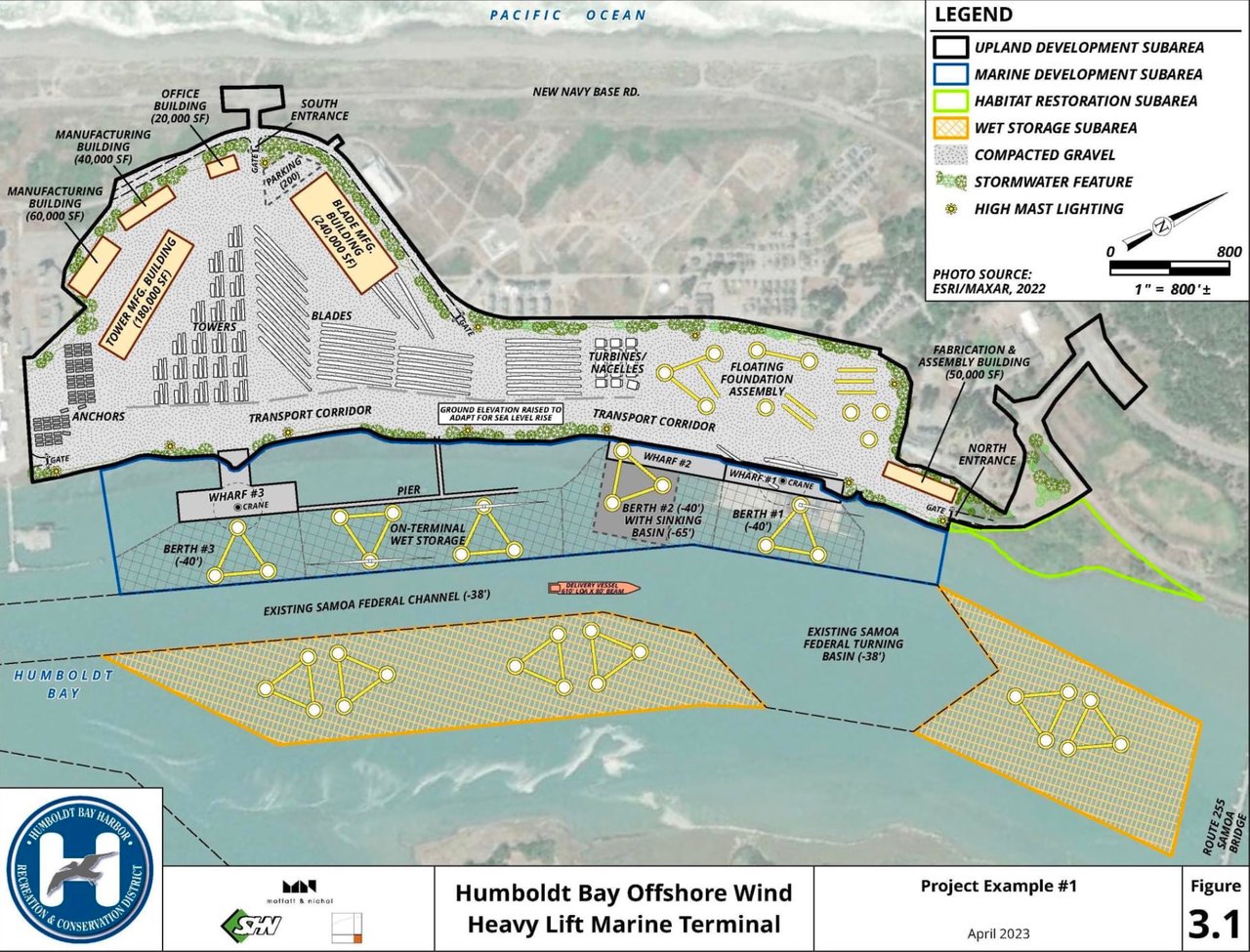(CN) — Eureka's halcyon days as the "timber capital" of California are long gone, but the deepwater port city 270 miles north of San Francisco may see its fortunes turn as the hub of the state's first foray in offshore wind energy.
Located on Humboldt Bay at a particularly windy corner of the Northern California coast, Eureka sits across two of the five swaths of Pacific Ocean along the California coast that the federal government auctioned off to offshore wind developers this past December for a total of $757 million. The three other leases are on the Central Coast across from Morro Bay.
California is a late entry in the race to explore offshore wind as a source of renewable energy because until recently it wasn't feasible to deploy wind turbines on the steep ocean bottom off the Pacific Coast. On the Atlantic Coast, fixed-bottom wind turbines can sit on the more shallow seabed, but it's only with the large-scale, commercial development of so-called floating wind turbines in the last few years that the Pacific Ocean has become suitable for wind farms.
Humboldt Bay, the second-largest bay in California after the San Francisco Bay, is ideally suited to become the final assembly port for the massive turbines. The models expected to be used off the California coast should have more capacity and be larger than the ones currently in use in Europe, and including the blades, they can rise as high as 1,100 feet above the water — about the height of the Eiffel Tower.
The port at Eureka has a deep navigation channel, no bridges that would hinder towing the tall assemblies out to sea, and hundreds of acres of vacant industrial land along the shore that was once used by the timber industry, said Larry Oetker, the executive director of the Humboldt Bay Harbor, Recreation, and Conservation District.
"This is where the future of offshore wind is going to be," Oetker said. "You can't just do this in any place. You couldn't do the final assembly in the San Francisco Bay."
The floating foundations for each turbine that will have to be assembled onshore alone are 100 feet tall, the height of a 10-story building, and 425 feet wide. Once assembled, the foundation will be moved from land on a floating barge that will then be sunk so the foundation can be towed to the location in the port where the tower for the turbine will be erected on top of it and the blades attached.

The various parts for the turbines will be mostly manufactured elsewhere in California and shipped to Humboldt Bay from ports down the coast. Given Humboldt Bay's proximity to Oregon, it's expected the port will serve as the staging area for future wind farms that are being considered for the Oregon coast.
To make this all happen, the port must first build a terminal where the final assembly can take place. With a $10 million state grant received two years ago, Humboldt Bay has mostly completed the preliminary studies and assessments for the project and is close to submitting its environmental impact report and applying for the needed regulatory permits, according to Oetker. The port is working on a final agreement with Crowley, a logistics and shipping company, to jointly develop and operate the new terminal.
The offshore wind terminal will transform the region, which has been hit hard by the rapid decline of the timber industry in the past decades. Humboldt Bay was for more than a hundred years primarily a timber port where sawmills cut the redwoods and other trees logged in the area to be loaded on barges for transport elsewhere. The 2008 financial crisis drove the final nail in the coffin of the few remaining lumber businesses, leaving the port's industrial land mostly vacant.











